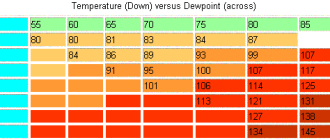
Is 22 degrees OK for AC?
When it comes to setting the temperature on your AC, finding the perfect balance between comfort and energy efficiency is crucial. One common question that many people have is whether 22 degrees is okay for their AC. Let’s explore this topic and determine the ideal temperature for your air conditioning.
Firstly, it’s important to note that the ideal temperature for your AC can vary depending on several factors, including personal preference and the climate in which you live. However, many experts recommend setting your AC to around 22 degrees celsius (71.6 degrees Fahrenheit) for optimal comfort during the summer months.
At 22 degrees, most people find that their AC provides a comfortable indoor environment without feeling too cold or too hot. This temperature allows for a good balance between coolness and energy efficiency, helping you stay comfortable while also saving on energy costs.
However, it’s important to remember that what feels comfortable to one person may not be the same for another. It’s always a good idea to experiment with different temperatures to find what works best for you. Additionally, factors such as humidity levels and insulation in your home can also affect how your AC performs, so it’s worth considering these factors as well.
Is 22 degrees OK for AC?
When it comes to setting the temperature for your air conditioning (AC) system, finding the ideal temperature can make a significant difference in your comfort and energy usage. Many factors can influence the suitable temperature, including personal preferences, humidity levels, and insulation in your home.
While it may vary from person to person, a temperature of 22 degrees Celsius (71.6 degrees Fahrenheit) can generally be considered an “okay” temperature for AC. This temperature typically provides a balance between comfort and energy efficiency.
However, it’s important to note that the ideal temperature for AC can vary depending on various factors such as the climate you live in, the size of your home, and your personal preferences. Some people may prefer a slightly higher or lower temperature, depending on their comfort levels.
Additionally, it’s worth considering how your AC temperature affects energy consumption and costs. The lower you set the temperature, the more energy your AC system will consume. Finding a temperature that keeps you comfortable while also being mindful of energy usage can help save on electricity bills.
In conclusion, while 22 degrees Celsius (71.6 degrees Fahrenheit) can be an okay temperature for AC, it’s important to find the temperature that works best for you and your home. Experimenting with different temperatures and considering factors such as energy consumption can help you find the ideal temperature for your air conditioning system.
Determine the ideal temperature for your air conditioning
When it comes to setting the temperature on your AC, it is important to find the right balance between comfort and energy efficiency. One commonly recommended temperature is 22 degrees Celsius.
Is 22 degrees Celsius OK for your AC? It depends on your personal preferences and the climate in which you live. Some people find 22 degrees Celsius to be the perfect temperature for cooling their homes, while others may prefer it to be a bit cooler or warmer.
It is worth noting that setting your AC to a lower temperature, such as 18 or 20 degrees Celsius, uses more energy and may result in higher electricity bills. On the other hand, setting it too high, such as 24 or 26 degrees Celsius, may not provide enough cooling and may leave you feeling uncomfortable.
To determine the ideal temperature for your air conditioning, consider factors such as your comfort level, energy efficiency goals, and the climate in which you live. It may be helpful to experiment with different temperatures and see what works best for you.
In addition to temperature, other factors such as humidity levels and air circulation can also impact the effectiveness of your AC. It is important to maintain a comfortable and healthy indoor environment by ensuring proper ventilation and humidity control.
In conclusion, while 22 degrees Celsius can be considered an OK temperature for your AC, the ideal temperature will vary depending on your preferences and circumstances. Finding the right balance between comfort and energy efficiency is key to maximizing the benefits of your air conditioning system.
Understanding the importance of setting the right temperature
Setting the right temperature for your air conditioning is crucial to ensure comfort, energy efficiency, and proper functioning of the system. While 22 degrees Celsius may be considered “OK” for the AC, it’s important to understand the implications of this temperature choice.
Firstly, 22 degrees Celsius is a moderate temperature that can provide a comfortable indoor environment. This temperature can help maintain a balance between coolness and warmth, making it suitable for most individuals.
However, it’s essential to note that the ideal temperature can vary depending on personal preferences, climate conditions, and the type of activity or occupancy in the space. Some individuals may prefer a slightly cooler temperature, while others may find 22 degrees Celsius to be too cold.
Another aspect to consider is energy efficiency. The lower the temperature setting on your AC, the more energy it will consume. This can lead to higher electricity bills and a greater impact on the environment. By setting the temperature to an optimal level, such as 22 degrees Celsius, you can strike a balance between comfort and energy efficiency.
It’s also worth mentioning that air conditioning systems are designed to remove humidity from the air. Setting the temperature too low, such as below 20 degrees Celsius, can result in excessive dehumidification, leading to dryness and discomfort. On the other hand, setting the temperature too high, above 24 degrees Celsius, may not effectively remove humidity, resulting in a damp and sticky indoor environment.
In conclusion, while 22 degrees Celsius may be considered “OK” for the AC, it’s important to understand the individual needs and environmental factors that can influence the ideal temperature. Striking a balance between comfort, energy efficiency, and humidity control is crucial for a pleasant and healthy indoor environment.
Factors to consider when setting the temperature
When determining the ideal temperature for your air conditioning, there are several factors to consider.
Comfort:
One of the main factors to consider is your personal comfort. While 22 degrees may be okay for some, others may find it too cold or too warm. It is important to set a temperature that you find comfortable for your specific needs.
Energy Efficiency:
Another factor to consider is energy efficiency. Setting your air conditioning temperature too low can result in higher energy consumption and electricity bills. It is recommended to find a balance between comfort and energy efficiency.
Climate:
The climate of your location should also be taken into account. If you live in a hot and humid area, you may need to set a lower temperature to combat the heat and humidity. On the other hand, if you live in a cooler climate, a higher temperature may be sufficient.
Insulation:
The insulation of your home or office is another important factor. If your space is well-insulated, it will retain the cool air and require less energy to maintain the desired temperature. Conversely, poor insulation may result in wastage of energy and difficulties in achieving the desired temperature.
Personal Preference:
Finally, personal preference plays a role in setting the temperature. Some individuals may prefer a cooler environment, while others may prefer a slightly warmer one. It is important to find a temperature that suits your individual preferences.
Considering these factors will help you determine the optimal temperature for your air conditioning, ensuring both comfort and energy efficiency.
The impact of temperature on energy consumption
When it comes to setting the temperature on your AC, it is important to find the right balance between comfort and energy efficiency. Is 22 degrees Celsius OK for your AC? The answer depends on several factors, including personal preference and external conditions.
Running your AC at 22 degrees Celsius is generally considered comfortable for most people. However, it is worth noting that the lower the temperature, the more energy your AC will consume. In warmer climates, where high temperatures are common, setting your AC to 22 degrees Celsius may result in a higher energy bill.
It is recommended to find the highest temperature that still provides a comfortable environment for you and your family. This will not only help save on your energy consumption but also reduce your carbon footprint. Every degree you increase on your thermostat can make a significant difference in terms of energy savings.
Additionally, proper insulation and regular AC maintenance can help maximize energy efficiency. Insulating your home can prevent cool air from escaping, keeping the temperature stable and reducing the load on your AC. Maintaining your AC regularly, such as cleaning or replacing filters, can ensure optimal performance and minimize energy consumption.
In conclusion, while 22 degrees Celsius may be OK for your AC, it is important to consider the impact on energy consumption. Finding the ideal temperature for your air conditioning system can help you strike a balance between comfort and energy efficiency, ultimately saving you money and reducing your environmental impact.
Health benefits of maintaining the ideal temperature
Maintaining the ideal temperature of 22 degrees for your AC can provide several health benefits. Here are some of them:
| Improved sleep quality | Keeping your room at a comfortable temperature can help promote better sleep. Research suggests that a room temperature of around 22 degrees Celsius is optimal for sleep. It allows your body to cool down and relax, leading to a more restful sleep. |
| Reduced risk of dehydration | Air conditioning helps to decrease humidity levels, which can prevent excessive sweating and fluid loss. By maintaining a temperature of 22 degrees, you can stay comfortably cool without the risk of dehydration. |
| Better respiratory health | A well-maintained AC system can improve indoor air quality by filtering out pollutants and allergens. This can be especially beneficial for individuals with respiratory conditions such as asthma or allergies. A temperature of 22 degrees helps to maintain a clean and comfortable environment for your respiratory health. |
| Reduced risk of heat-related illnesses | During hot summer months, maintaining a cool temperature of 22 degrees in your home or workplace can help prevent heat-related illnesses like heat stroke and heat exhaustion. It helps to regulate your body temperature and prevents overheating. |
| Enhanced productivity and concentration | An ideal temperature of 22 degrees can create a comfortable working environment. Research suggests that a cool and comfortable workplace can improve productivity and concentration levels. It helps to keep your mind focused and prevents the distractions caused by excessive heat or cold. |
By maintaining a temperature of 22 degrees for your AC, you can enjoy these health benefits and create a more comfortable and conducive environment for your overall well-being.
The relationship between temperature and humidity
When it comes to finding the ideal temperature for your air conditioning, it is important to consider the relationship between temperature and humidity. The temperature alone does not determine the comfort level of a room; the humidity levels also play a significant role.
The ideal temperature for an air-conditioned room is typically around 22 degrees. This temperature provides a comfortable environment for most people. However, it is important to note that the ideal temperature can vary depending on personal preferences and the specific conditions of the room.
Humidity refers to the amount of moisture in the air. High humidity levels can make a room feel hot and stuffy, even if the temperature is set to a comfortable level. On the other hand, low humidity levels can cause dryness and discomfort. It is important to find a balance between temperature and humidity to ensure optimal comfort.
One way to manage humidity levels is by using a dehumidifier or a humidifier, depending on the needs of the room. A dehumidifier helps to remove excess moisture from the air, while a humidifier adds moisture to the air when it is too dry. By balancing humidity levels, you can further enhance the comfort of your air-conditioned room.
| 22 degrees | 40-60% |
It is important to note that the ideal humidity level can also vary depending on the specific needs and preferences of individuals. Some people may prefer a higher or lower humidity level, so it is always a good idea to adjust the settings according to personal comfort.
In conclusion, while setting the temperature to 22 degrees can provide a comfortable environment for most people, it is important to also consider the humidity levels in order to create the ideal air-conditioned space. By finding the right balance between temperature and humidity, you can ensure optimal comfort and enhance the overall air quality in your room.
Setting the temperature for different seasons
When it comes to setting the temperature on your AC unit, it’s important to consider the different seasons. The ideal temperature for your air conditioning can vary depending on whether it’s summer or winter.
In summer, a temperature of 22 degrees Celsius (71.6 degrees Fahrenheit) is generally considered to be comfortable for most people. This provides a cool and refreshing environment without being too cold. However, personal preferences may vary, so it’s important to adjust the temperature based on your own comfort level.
In winter, you may want to set your AC unit to a slightly higher temperature. This can help to keep your indoor space warm and cozy when it’s cold outside. A temperature of around 22 degrees Celsius (71.6 degrees Fahrenheit) can be a good starting point, but again, it’s important to adjust the temperature to suit your own preferences.
Remember, the ideal temperature for your AC unit may also depend on other factors such as humidity levels and insulation in your home. It’s a good idea to experiment with different settings to find what works best for you and your space.
How to find the perfect balance for your air conditioning
When it comes to setting the temperature on your air conditioning unit, finding the perfect balance is essential. One commonly debated temperature setting is 22 degrees Celsius (22°C). But is it ok for your AC? Let’s find out.
While 22 degrees Celsius may be comfortable for some people, it might be too cold for others. The ideal temperature for your air conditioning depends on several factors, including personal preference and the climate you live in.
It’s important to consider the average temperature outside. If it’s hot and humid, setting your AC to 22 degrees Celsius may provide relief. However, if it’s relatively cool outside, you might find that this temperature makes your indoor environment too cold.
You should also consider energy efficiency. Lowering the temperature significantly can increase energy consumption and result in higher utility bills. By finding the right balance, you can stay comfortable while minimizing your energy usage.
To find the perfect balance for your air conditioning, start by setting your thermostat to 22 degrees Celsius and monitor how it feels. If it’s too cold, try increasing the temperature by a degree or two. If it’s still not comfortable, continue adjusting until you find your ideal temperature.
Remember that everyone’s comfort level varies, so it’s essential to find what works best for you. Experiment with different temperatures and pay attention to your body’s response. This way, you can optimize your air conditioning settings to achieve the perfect balance between comfort and energy efficiency.
Adjusting the temperature for optimal sleep
When it comes to getting a good night’s sleep, the temperature of your bedroom plays a crucial role. The right temperature can help you fall asleep faster, stay asleep longer, and wake up feeling refreshed. It is well-known that the ideal temperature for quality sleep is between 60 and 67 degrees Fahrenheit.
Research shows that a cooler room temperature is more beneficial for sleep. This is because our body temperature naturally drops when we sleep, and a cooler environment can aid in this process. AC is a great way to achieve and maintain the ideal temperature for optimal sleep. Setting the AC to around 22 degrees Celsius or 72 degrees Fahrenheit is generally considered to be a good starting point.
However, it is important to note that individual preferences may vary. Some people may find 22 degrees Celsius too cold or too hot for sleeping. It is always a good idea to experiment and adjust the temperature according to your own comfort level. If you find that 22 degrees is too cold, try raising it by a degree or two. Conversely, if it feels too warm, lower it slightly.
Additionally, using bedding and pajamas made from breathable materials can enhance the sleep experience. Materials like cotton or bamboo allow for better airflow and help regulate body temperature, making it easier to stay cool or warm as needed.
In conclusion, adjusting the temperature of your AC to around 22 degrees Celsius or 72 degrees Fahrenheit is a good starting point for optimal sleep. However, finding the perfect temperature for you may require some experimentation and personal preference. It is important to create a sleep environment that promotes comfort and relaxation to ensure a restful night’s sleep.
Tips for saving energy while keeping a comfortable temperature
When it comes to setting the temperature of your air conditioning, 22 degrees is generally considered to be an ok temperature. However, there are some tips you can follow to save energy and still keep a comfortable temperature in your home.
1. Use a programmable thermostat: Using a programmable thermostat can help you set different temperatures for different times of the day. For example, you can set it to a higher temperature when you’re not at home and lower it when you’re there. This way, you can save energy when you don’t need to cool your home.
2. Keep your AC well-maintained: Regular maintenance of your air conditioning unit can ensure that it works efficiently and doesn’t consume excessive energy. Clean or replace the air filters regularly and have a professional check the system for any issues.
3. Use ceiling fans: Ceiling fans can help circulate the cool air in your home, allowing you to set the temperature a bit higher while still feeling comfortable. This can significantly reduce the load on your air conditioning unit and save energy.
4. Close curtains and blinds: Closing curtains and blinds during the day can block out the sun’s heat and help keep your home cooler. This means your air conditioning won’t have to work as hard to cool down the space.
5. Seal leaks and insulate well: Make sure your home is properly insulated and sealed to prevent air leaks. This can help maintain a comfortable temperature and reduce the workload on your air conditioning system.
By following these tips, you can save energy while still enjoying a comfortable temperature in your home. Remember, finding the ideal temperature for your air conditioning is important for both your comfort and energy efficiency. Experiment with different settings to find what works best for you.
Conserving energy and reducing greenhouse gas emissions
One way to conserve energy and reduce greenhouse gas emissions is by optimizing the temperature settings on your air conditioning (AC) system. Setting your AC to 22 degrees Celsius is considered a comfortable and energy-efficient temperature.
By keeping your AC at this temperature, you can enjoy a cool and comfortable environment while also minimizing the energy consumption of your AC unit. This temperature is generally recommended by energy experts as it strikes a balance between comfort and energy efficiency.
Choosing an appropriate temperature for your AC can have a significant impact on your energy consumption. Lowering the temperature too much can lead to excessive energy usage and higher greenhouse gas emissions. On the other hand, setting the temperature too high may result in discomfort and the need for additional cooling measures.
In addition to optimizing the temperature, there are several other ways to conserve energy and reduce greenhouse gas emissions related to AC usage:
- Use a programmable thermostat to set different temperatures for different times of the day, allowing you to adjust the AC settings automatically and avoid unnecessary cooling when you’re not at home.
- Ensure proper insulation in your home to prevent the cool air from escaping and the hot air from entering, maximizing the efficiency of your AC system.
- Regularly clean and maintain your AC unit to ensure its optimal performance, as a well-maintained system consumes less energy.
- Consider using ceiling fans or portable fans to supplement the cooling effect of your AC, allowing you to raise the temperature slightly without sacrificing comfort.
- During mild weather, consider opening windows and using natural ventilation instead of solely relying on your AC system.
By following these guidelines and being mindful of your AC usage, you can help conserve energy and reduce greenhouse gas emissions, contributing to a greener and more sustainable future.
The recommended temperature for different activities
When it comes to indoor comfort, finding the right temperature for different activities can make all the difference. Here are some recommended temperature ranges for various activities:
- Sleeping: It is generally recommended to set the temperature between 60 and 67 degrees Fahrenheit (15-20 degrees Celsius) for a comfortable night’s sleep.
- Working: For optimum productivity, the temperature in an office or workspace should be set between 70 and 75 degrees Fahrenheit (21-24 degrees Celsius).
- Exercising: During physical activity, a slightly cooler environment is often preferred. Setting the temperature between 68 and 72 degrees Fahrenheit (20-22 degrees Celsius) can help prevent overheating.
- Relaxing: When relaxing or watching television, a temperature of around 72 degrees Fahrenheit (22 degrees Celsius) is often considered comfortable.
- Cooking: In a kitchen, it’s best to keep the temperature between 68 and 75 degrees Fahrenheit (20-24 degrees Celsius) to prevent excessive heat buildup.
Remember that these are general recommendations and personal preferences may vary. It’s important to find a temperature that suits your comfort level and the specific activity you’re engaging in.
Common misconceptions about air conditioning temperatures
Many people believe that setting their air conditioning to 22 degrees Celsius is the ideal temperature for comfort and energy efficiency. However, this is not always the case.
Myth: 22 degrees is the perfect temperature for AC
While 22 degrees may be comfortable for some individuals, it may not be suitable for everyone. Each person has different preferences and comfort levels. It’s important to find the temperature that works best for you.
The ideal temperature for AC
The ideal temperature for air conditioning depends on several factors, including the outdoor temperature, humidity levels, and personal preferences. Generally, a range of 23-25 degrees Celsius is considered comfortable and energy-efficient. However, it’s important to adjust the temperature based on your specific needs and the conditions in your environment.
Energy efficiency
Setting your air conditioning to a higher temperature can help save energy and reduce your utility bills. Each degree lower than the recommended range can increase energy consumption by 3-5%. By setting your AC to the ideal temperature, you can maintain a comfortable indoor environment while minimizing energy waste.
Monitoring and adjusting
It’s essential to regularly monitor and adjust your air conditioning temperature to ensure optimal comfort and energy efficiency. Experiment with different settings to find what works best for you. Keep in mind that it’s also important to consider the impact on the environment and use your AC responsibly.
Remember, the ideal temperature for your air conditioning may vary, and it’s crucial to find what suits your needs best. Consider the factors mentioned above and prioritize both comfort and energy efficiency when setting your AC temperature.
Final thoughts: finding the ideal temperature for your air conditioning
Is 22 degrees okay for your AC? The ideal temperature for your air conditioning depends on your personal comfort and energy efficiency goals. While 22 degrees may feel comfortable for some, others may find it too cold or not cool enough.
It’s recommended to set your AC temperature between 22 and 26 degrees for optimal energy efficiency. However, it’s important to consider factors such as humidity, insulation, and the outdoor temperature when determining the ideal temperature for your air conditioning.
Remember that each person has their own preference for room temperature, so it’s essential to find a balance that works for you and your household. It’s a good idea to experiment with different temperatures and observe how your body and energy consumption respond.
In addition to personal comfort, it’s important to consider the impact of temperature settings on energy consumption and costs. The higher the temperature, the lower your energy consumption and costs will be. However, setting the temperature too high may compromise your comfort.
Ultimately, finding the ideal temperature for your air conditioning is about striking a balance between comfort and energy efficiency. Consider your personal preferences, the climate you’re in, and how your AC unit performs to determine the best temperature setting for your home.
Remember to regularly maintain your AC unit to ensure it operates efficiently and effectively. This includes cleaning or replacing filters, checking for leaks or blockages, and scheduling professional maintenance as needed.
By finding the right temperature setting and taking care of your air conditioning unit, you can enjoy a comfortable and energy-efficient home environment all year round.
Q&A:
What is the ideal temperature for air conditioning?
The ideal temperature for air conditioning is generally around 22 degrees Celsius.
Is 22 degrees too cold for air conditioning?
Some people may find 22 degrees too cold for air conditioning, while others may find it comfortable. It depends on personal preference.
Should I set my air conditioner to 22 degrees?
Setting your air conditioner to 22 degrees is a good starting point. You can adjust it slightly depending on your comfort level.
What temperature should I set my air conditioner to save energy?
To save energy, it is recommended to set your air conditioner to a temperature around 24-26 degrees Celsius.






